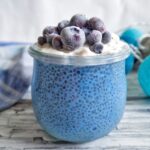Juggling work, family, and a healthy lifestyle can feel like a never-ending race against the clock. Finding quick, nutritious, and allergen-free snacks often falls by the wayside. But what if delicious, satisfying snacks could be prepared in under ten minutes, without compromising on taste or health? This guide unveils a collection of vibrant, easy-to-make recipes designed to fuel your busy days, all while catering to specific dietary needs. Imagine bright bowls of colorful fruits, crunchy vegetable sticks, or subtly sweet energy bites, ready to banish those afternoon slumps.
We’ll explore five core allergen-free snack recipes, each with three delicious variations to keep your taste buds engaged. Learn how to cleverly adapt these recipes to suit vegetarian, vegan, and other dietary preferences, making healthy snacking accessible to everyone. We’ll also cover essential tips for efficient preparation, smart storage, and mindful ingredient sourcing, ensuring your snacks remain fresh, safe, and utterly delightful, even amidst the whirlwind of a busy schedule. Get ready to redefine your snacking game!
Storage and Preparation Tips for Busy Days

Efficiently storing and preparing allergen-free snacks is key to maintaining a healthy and convenient diet, especially during busy weekdays. Proper storage prevents spoilage and preserves the nutritional value of your snacks, while advance preparation saves valuable time in the mornings. The following strategies will help you streamline your snacking routine.
Optimal Storage Methods for Allergen-Free Snacks
Maintaining the freshness and quality of your allergen-free snacks requires careful attention to storage. Different snacks require different approaches to prevent spoilage and maintain their appealing texture and taste.
- Fruit and Vegetable Sticks (e.g., Carrot sticks, apple slices): Store cut fruits and vegetables in airtight containers lined with paper towels to absorb excess moisture. Refrigerate for up to 3-4 days. The paper towels help prevent browning and maintain crispness. Consider using a reusable silicone food storage bag for eco-friendly storage.
- Nut and Seed Mixes: Store nut and seed mixes in airtight containers in a cool, dark, and dry place. Avoid storing them in the refrigerator, as this can increase moisture content and potentially lead to rancidity. Properly stored, they can last for several weeks.
- Homemade Energy Balls: Store energy balls in an airtight container in the refrigerator for up to a week. The refrigerator helps maintain their shape and prevents them from drying out. Freezing them for longer storage (up to a month) is also an option.
- Baked Goods (e.g., muffins, cookies): Store baked goods in an airtight container at room temperature for up to 3-4 days, or in the freezer for up to 3 months. Freezing helps maintain their freshness and texture. Ensure they are completely cooled before freezing to prevent condensation.
Step-by-Step Guide for Advance Snack Preparation
Preparing snacks ahead of time is a highly effective strategy for busy individuals. This approach eliminates the need for rushed morning preparations and ensures you always have healthy, allergen-free options available.
- Weekend Prep: Dedicate a portion of your weekend to preparing snacks for the upcoming week. This allows for efficient batch cooking and assembly.
- Portioning: Portion your snacks into individual containers or bags. This simplifies grab-and-go snacking and prevents overeating.
- Labeling: Clearly label each container with the contents and date of preparation. This helps with easy identification and ensures you consume older snacks first.
- Storage: Store prepared snacks according to their specific requirements (as Artikeld above) to maintain freshness.
Efficient Packing for On-the-Go Consumption
Choosing the right packaging is crucial for convenient and mess-free snack consumption on the go.
- Reusable Containers: Opt for reusable containers made from durable, leak-proof materials. These are environmentally friendly and prevent spills.
- Silicone Bags: Reusable silicone bags are a great alternative to plastic bags, providing a lightweight and flexible option for carrying snacks.
- Insulated Lunch Bags: For temperature-sensitive snacks like yogurt or fruit, an insulated lunch bag helps maintain the ideal temperature, preventing spoilage.
- Organization: Pack snacks in a way that prevents them from crushing or mixing together. Consider using dividers or separate compartments within your lunch bag.
Ingredient Sourcing and Allergen Awareness
Creating delicious and safe allergen-free snacks requires careful attention to ingredient sourcing and meticulous label reading. Understanding where your ingredients come from and how they are processed is crucial for preventing accidental exposure to allergens. This section will guide you through identifying reliable sources, deciphering food labels, and practicing safe kitchen handling techniques.
Choosing the right ingredients is paramount for creating truly allergen-free snacks. Prioritizing quality and safety ensures both the taste and health benefits of your creations. This involves selecting suppliers with robust allergen control programs and transparent labeling practices.
Reliable Sources for Allergen-Free Ingredients
Selecting reputable suppliers is fundamental to minimizing allergen cross-contamination risks. Look for companies that explicitly state their allergen-free policies and certifications, such as those certified by organizations specializing in allergen management. Directly contacting producers to inquire about their processing facilities and allergen-control measures provides valuable insight. Specialty stores catering to dietary restrictions often offer a wider selection of verified allergen-free products. Consider purchasing directly from farmers’ markets, where you can engage directly with producers and ask about their growing and handling practices. Always prioritize suppliers who clearly communicate their commitment to allergen safety.
Understanding Allergen Labeling and Cross-Contamination
Food labels are your first line of defense against allergens. Carefully scrutinize each ingredient list, paying close attention to any potential allergen declarations. Common allergens, such as milk, eggs, soy, wheat, peanuts, tree nuts, fish, and shellfish, must be clearly identified on labels. The presence of “may contain” statements indicates a possibility of cross-contamination during processing, storage, or packaging. Even trace amounts of an allergen can trigger a reaction in sensitive individuals, highlighting the importance of thorough label examination. Understanding this allows you to make informed choices and avoid potential risks.
Safe Handling Practices in the Kitchen
Maintaining a clean and allergen-free kitchen environment is essential. Designate specific cutting boards, utensils, and cooking surfaces for allergen-free preparations. Thoroughly wash and sanitize all equipment after use to prevent cross-contamination. Avoid preparing allergen-containing foods simultaneously with allergen-free snacks. This prevents airborne particles or residue from contaminating your allergen-free preparations. Proper handwashing before and after handling ingredients is crucial. Even small particles can cause reactions, so careful attention to hygiene is paramount.
Recipe Adaptation and Customization
These allergen-free snack recipes are designed to be versatile and adaptable, allowing you to easily modify them to suit your individual dietary needs and preferences beyond simply avoiding allergens. Whether you’re a vegetarian, vegan, or have other specific dietary requirements, these recipes provide a solid foundation for creating delicious and healthy snacks tailored to you. Seasonal ingredient substitutions also allow for year-round enjoyment and exploration of fresh flavors.
Adapting these recipes involves a thoughtful approach to ingredient swapping and scaling, ensuring the final product maintains its nutritional value and appealing texture. Understanding the role of each ingredient is crucial for successful customization.
Dietary Adaptation
These recipes can be easily adapted to various dietary needs. For example, many recipes already utilize plant-based ingredients, making them naturally suitable for vegetarians. To transition a recipe to a vegan option, simply replace any dairy products (like butter or cheese) with vegan alternatives such as vegan butter or nutritional yeast for a cheesy flavor. Similarly, eggs can often be replaced with applesauce or flax eggs (ground flaxseed mixed with water). For those following a gluten-free diet, ensure all ingredients, including any added seasonings or sauces, are certified gluten-free. Always check labels carefully. For those with other dietary restrictions, such as low-sodium or low-sugar diets, adjustments can be made by reducing or eliminating these ingredients accordingly. Remember to always consult with a doctor or registered dietitian if you have specific dietary concerns or restrictions.
Seasonal Ingredient Substitution
Seasonal produce offers a fantastic opportunity to enhance the flavor and nutritional profile of these snacks. For instance, if a recipe calls for berries, substituting strawberries in summer with cranberries or blueberries in fall will provide a different taste and color while maintaining the recipe’s overall structure. Similarly, using seasonal vegetables such as zucchini in summer or butternut squash in fall can dramatically change the flavor and texture of a snack, providing variety throughout the year. Consider using frozen fruits and vegetables during off-seasons to maintain access to diverse ingredients. Remember to adjust cooking times based on the water content of different seasonal vegetables.
Scaling Recipes
Scaling these recipes is straightforward. Simply multiply or divide the ingredient quantities by a consistent factor. For example, to double a recipe, multiply each ingredient quantity by two. To halve a recipe, divide each quantity by two. This principle applies to both wet and dry ingredients.
For example: If a recipe calls for 1 cup of flour and ½ cup of water, doubling it would require 2 cups of flour and 1 cup of water.
When scaling recipes significantly (e.g., increasing the recipe by a factor of 5 or more), consider using larger cookware to ensure even cooking and avoid overcrowding. Accurate measurements are crucial when scaling to maintain the intended consistency and flavor.
From vibrant fruit salads bursting with color and flavor to savory vegetable sticks with creamy dips, this guide empowers you to conquer those hectic days with delicious and allergy-conscious snacks. By mastering the art of quick preparation, strategic storage, and mindful ingredient selection, you’ll effortlessly incorporate healthy, allergen-free snacks into your routine. No more compromising on taste or nutrition—enjoy the freedom of quick, easy, and satisfying snacks that fuel your busy life. Embrace the vibrant colors, the delightful textures, and the sheer convenience of these recipes, and savor every bite!
FAQs
What if I have more than one allergy?
Always carefully check all ingredient labels for potential allergens. If you have multiple allergies, prioritize recipes with ingredients you know are safe and avoid those containing any of your allergens. When substituting ingredients, carefully check the labels of replacement items.
Can I freeze these snacks?
Freezing suitability varies depending on the recipe. Some, like fruit purees or energy bites, freeze well. Others, such as fresh vegetable sticks, are better enjoyed fresh. Consult individual recipe notes for freezing instructions.
How can I make these snacks kid-friendly?
Involve your children in the preparation! Let them help with age-appropriate tasks like washing fruits or mixing ingredients. Use cookie cutters to create fun shapes from fruits or vegetables. Consider serving dips in fun containers or using colorful skewers.
Are these snacks suitable for adults only?
Most of these recipes are suitable for both adults and children, but always consider the age and dietary needs of your child. Some recipes might need adjustments for very young children, for example, cutting ingredients into smaller, safer sizes.


